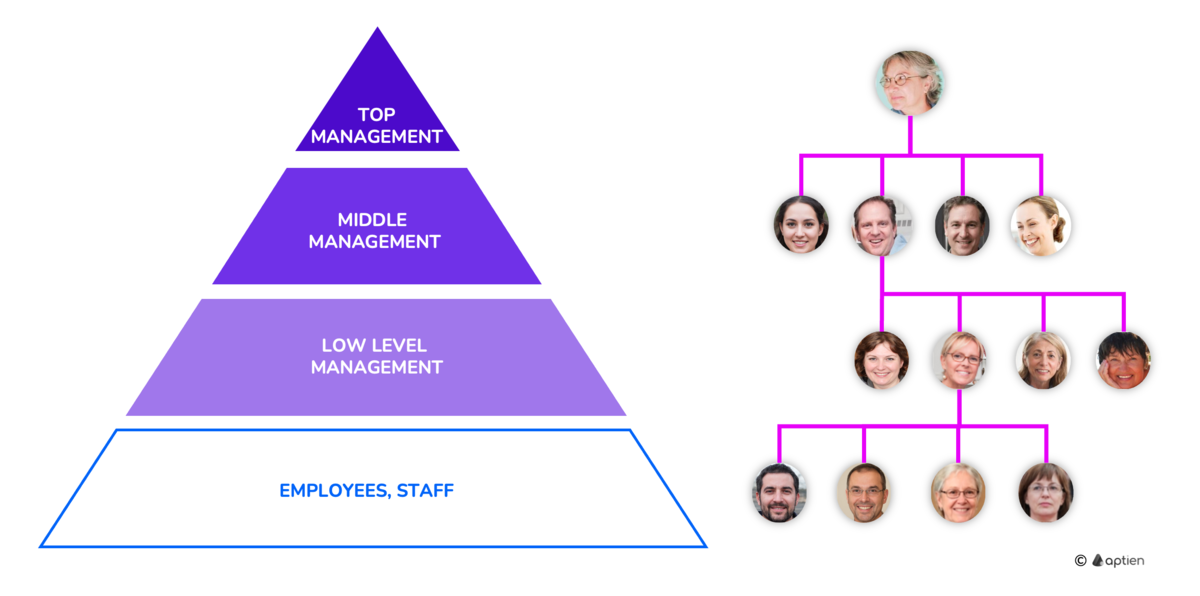Definition of Management Levels
There are three basic levels of management in medium and larger organizations. They are divided according to the extent of their responsibility and the role they play in the management of the organization. Small organizations usually do not have a middle level.
- First-line managers (bottom level management) form the basis of the management of every organization. These managers directly lead and manage their teams of workers. They typically deal with the operation and operational level of management.
- Middle managers (middle level management) is a layer of management that is typical for medium and large companies. This includes managers of departments, divisions, branches and various organizational units.
- Top managers (top management) are in charge of managing the organization or its key organizational units. They direct and coordinate all activities and create concepts and strategic direction This typically includes the company director and the so-called C-level (financial director, HR director, production director)
Managing people and organizing work requires quality information
At each level of management, the manager has some direct subordinates and is then responsible for the assigned area of management at the corresponding level. That is, the higher in the hierarchy, the wider the scope of responsibility. However, all levels of managers need quality information for their planning, decision-making, management and control.
- information about processes, work and tasks
- financial information about costs, revenues
- information about property and other assets
- Information about people
What you can do as a manager at Aptien
As a manager of any of the above levels, you have your direct subordinates set up in the organizational structure, with whom you can:
- Manage work with tasks
- Approve their requests
- See an overview of your people's tasks (under construction)
- See their employee record, personal information, onboarding, adaptation, training or other development plans
- Issued work equipment, tools and completed training and other information
You also have an overview of all the people in your organizational unit.
